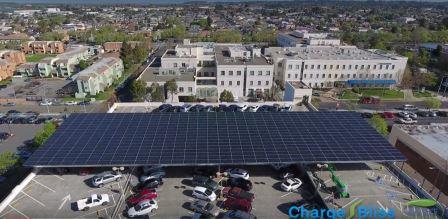

In this Edition
Construction
Management Specialists
111 Pine Street, Suite 1315
San Francisco, CA 94111
(415) 981-9430 (San Francisco office)
6518 Lonetree Blvd., Suite 164
Rocklin, CA 95765
(916) 742-1770 (Sacramento office)
9449 Balboa Avenue, Suite 270
San Diego, CA 92123
(619) 518-5648 (San Diego office)
8538 173rd Avenue NE
Redmond, WA 98052
(206) 571-0128 (Seattle office)
2063 Grant Road
Los Altos, CA 94024
(650) 386-1728 (South Bay office)
7083 Hollywood Blvd., 4th Floor
Los Angeles, CA 90028
(424) 343-2652 (Los Angeles, CA office)
78 Heathervue, Greystones
Wicklow, A63Y997, Ireland
+353 86-600-1352 (Europe office)
www.TBDconsultants.com
A microgrid is an energy grid that can operate independently of the public electricity supply grid. In some cases, it may be totally independent of the public grid, in which case it is known as an isolated microgrid, and this situation often arises in remote locations. Usually the microgrid is connected to the public grid by means of a PCC (point of common coupling), and can take power from the public grid at times, and at other times may feed power into it.

The advantages of a microgrid include the ability to maintain a power supply during times of public outages, which is why emergency facilities, military bases, and even manufacturing facilities and the like, will regularly use them. They also provide energy closer to the point of usage, resulting in less power loss due to transmission, and a microgrid can also make good use of locally available renewable power resources. The California ISO website (www.caiso.com) displays a graph showing how much of the total electrical demand is being met by such renewable resources.

Being able to switch between the locally produced power source of the microgrid and that of the public grid, can allow you to make better use of lower rates from public utilities at certain times of the day. Some utility providers, such as PG&E, are adjusting their rate structures to incentivize storage , such as lithium-ion batteries. Microgrids can also improve the overall resilience of the public grid, and enable it to make more use of distributed renewable resources. When using renewable generation sources, they aid the community as a whole by helping reduce greenhouse gas emissions.
Microgrids come in a wide range of sizes. If you have a solar installation on your house, together with storage capacity to supply power when the sun isnít shining, then you have a microgrid. You might also be able to earn money, by supplying power to the public grid at times when you are generating more than you need. A microgrid might also be serving a whole campus or community.
The three main ingredients of a microgrid are a power source, a storage method, and a method of controlling the power supply, and often connecting it to the public grid. The power source is often renewable, such as photovoltaics (PVs), wind-powered generators, geothermal, or hydro-powered, but they might also be diesel-powered generators. The energy storage system would usually be batteries (almost invariably lithium-ion), but can also include compressed air, flywheels, or other methods.
The controller is a critical part of a microgrid, and must maintain voltage and frequency, and prevent power surges by constantly adjusting in relation to the weather and to unit pricing, etc. The controls would normally include a switch that might have the ability to connect or disconnect automatically with the public grid, or it might require manual operation. When used as part of a resilient system, the controller will maintain reserve capacity. This reserve capacity will support the systems in the eventuality of utility loss.

This technology can already be cost effective, and prices of components are continuing to drop. Many building owners, if they are not already incorporating it into new buildings, are making provision in the building design for its incorporation at a later date.
Thanks to John Griffiths of Contech-CA for his assistance with this article, and to Justin Miller of Charge Bliss for the images.
Bitcoin has been even more volatile than the stock market, but the technology behind it can provide a stable platform for transactions. Here we look at how the blockchain might be be implemented in the construction industry.
We have recently seen some dramatic dips in the stock market, and here we look at the causes behind that, and what it might portend for the construction market.
Design consultant: Katie Levine of Vallance, Inc.